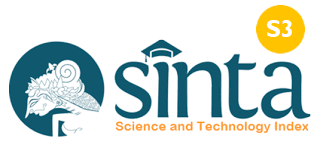Pengembangan Media Pembelajaran Macromedia Flash Pada Mata Pelajaran Bahasa Indonesia Untuk Meningkatkan Kemampuan Berpikir Kritis Pada Siswa Sekolah Dasar
DOI:
https://doi.org/10.37329/cetta.v6i2.2218Keywords:
Development, Learning Media, Macromedia Flash, Critical ThinkingAbstract
In the process of learning Indonesian, which actually teaches students to be able to think critically, in practice there are obstacles. Learning models that are not accompanied by media that will later make students interested and interested have not been able to maximize the evaluation of learning that has been achieved by students because it makes students lazy and bored in participating in lessons. Developing learning media using Macromedia Flash is a solution that researchers offer based on the needs analysis obtained. The purpose of this research is to be able to develop media for learning on the basis of Macromedia Flash that is applicable, practical and effective in improving students' critical thinking skills. The method in research uses the R&D method with ADDIE (investigation or analysis, design, development, implementation and evaluation or results). In this study, the subjects were 10 students at SDN Lirboyo 1 in a limited trial, and 24 students in class IV-A and 24 students in class IV-B at SDN Lirboyo II in a large-scale trial. The results of this study prove that media for learning in development scores 94.26% for validity, 87.70 for effectiveness and 95.09% for practicality. Based on these results, the researcher concluded that the learning media based on Macromedia Flash which was developed for learning Indonesian was valid, very practical and effective in improving students' skills in critical thinking.
References
Agip, Z. (2009). Penelitian Tindakan Kelas Untuk Guru. Bandung: Yrama Widya.
Agustina, A. Meningkatkan Hasil Belajar Siswa Pada Pelajaran Sains Dengan Menggunakan Media Gambar di Kelas IV SD BK Maranatha. Jurnal Kreatif Online, 7(1).
Akbar, S. (2015). Instrumen Perangkat Pembelajaran. Bandung: PT Remaja Rosdakarya.
Ardiansyah, N. (2013). Macromedia Flash 8. Sekadu: STKIP PGRI Pontianak.
Arnidah, A., & Anwar, C. R. (2020). Analisis melalui HOTS (High Order Thinking Skill) di SMPN 3 Bissappu Kabupaten Bantaeng. Seminar Nasional Pengabdian Kepada Masyarakat, 2019 (11), 710–712.
Barrat, C. (2014). Higher order thinking and assessment. In International Seminar on current issues in Primary Education: Prodi PGSD Universitas Muhammadiyah Makasar.
Eggen, P. D. K. (2012). Strategi dan Model Pembelajaran. Bandung: PT Indeks.
Ghozali, I. (2018). Aplikasi Analisis Multivariate dengan Program IBM SPSS 25. Semarang: Universitas Diponegoro.
Haig, Y. (2014). Higher Order Thinking And Assessment. Sulawesi Selatan: Universitas Muhammadiyah Makasar.
Irianto, A. (2007). Statistik Konsep Dasar dan Aplikasinya. Jakarta: Kencana Prenada Media Group.
Khairani, M., & Febrinal, D. (2016). Pengembangan Media Pembelajaran dalam Bentuk Macromedia Flash Materi Tabung untuk SMP Kelas IX. Jurnal IPTEKS Terapan, 10(2), 95–102.
Mahnun, N. (2012). Media pembelajaran (kajian terhadap langkah-langkah pemilihan media dan implementasinya dalam pembelajaran). Jurnal pemikiran islam, 37(1).
Sugiyono. (2017). Metode Penelitian Kuantitatif, Kualitatif, dan R&D. Bandung: CV Alfabeta.
Usman, H., & Akbar, P. S. (2011). Metodologi Penelitian Sosial (2nd ed.). Jakarta: Bumi Aksara.
Utama, N. P., Nilawasti, Z. A., & Vionanda, D. (2012). Penggunaan Macromedia Flash 8 Pada Pembelajaran Dimensi Tiga. Jurnal Pendidikan Matematika, 1(1), 51–59.
Downloads
Published
How to Cite
Issue
Section
License
Copyright (c) 2023 Faridatul Lian Maharani, Alfi Laila, Rian Damariswara

This work is licensed under a Creative Commons Attribution-ShareAlike 4.0 International License.
An author who publishes in the Cetta : Jurnal Ilmu Pendidikan agrees to the following terms:
- Author retains the copyright and grants the journal the right of first publication of the work simultaneously licensed under the Creative Commons Attribution-ShareAlike 4.0 License that allows others to share the work with an acknowledgement of the work's authorship and initial publication in this journal
- Author is able to enter into separate, additional contractual arrangements for the non-exclusive distribution of the journal's published version of the work (e.g., post it to an institutional repository or publish it in a book) with the acknowledgement of its initial publication in this journal.
- Author is permitted and encouraged to post his/her work online (e.g., in institutional repositories or on their website) prior to and during the submission process, as it can lead to productive exchanges, as well as earlier and greater citation of the published work (See The Effect of Open Access).
Read more about the Creative Commons Attribution-ShareAlike 4.0 Licence here: https://creativecommons.org/licenses/by-sa/4.0/.





